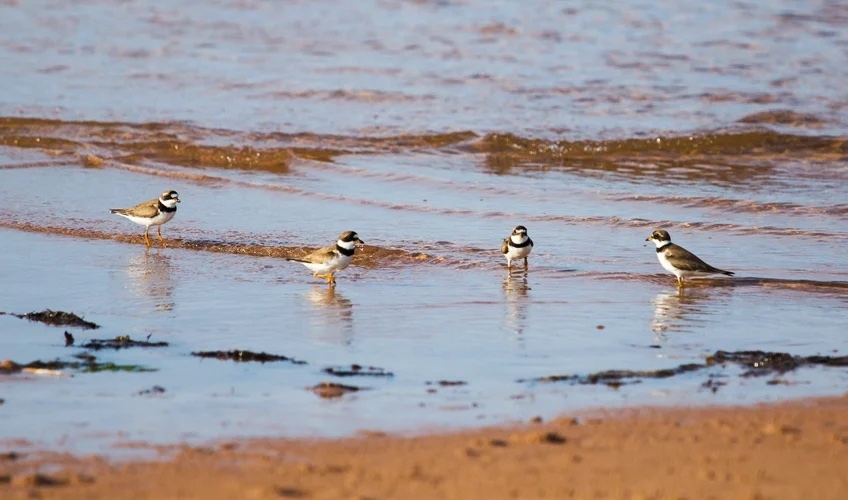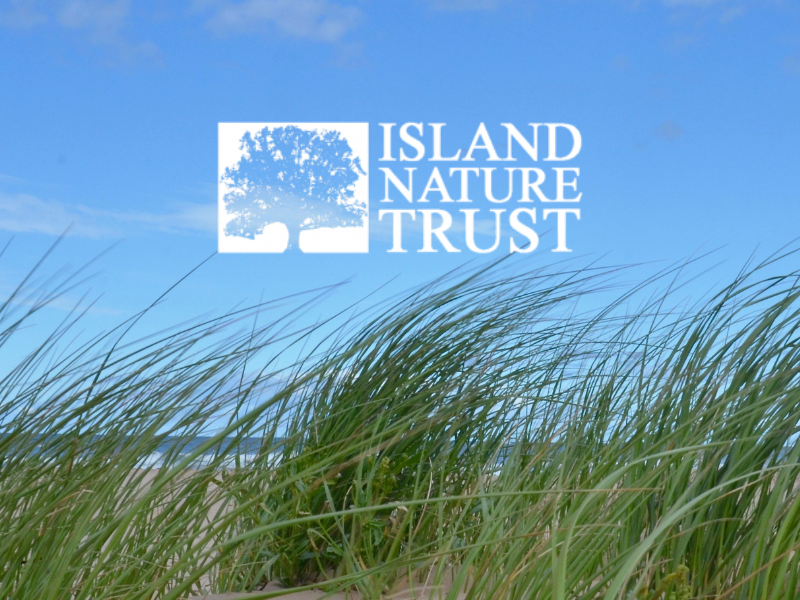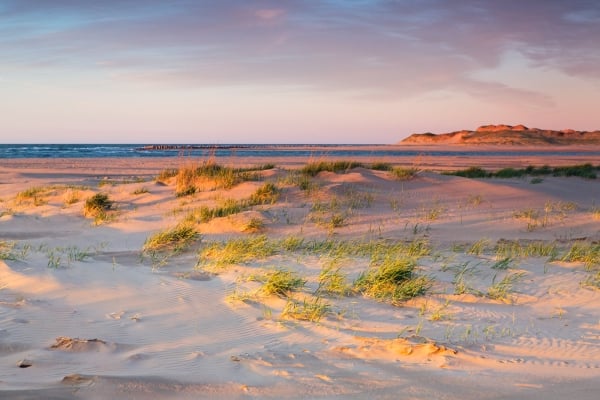Walk Lightly on Beaches
Published March 14, 2024 | with / avec Island Nature Trust
In Prince Edward Island, you are never far away from the sound of the waves or the fresh smell of sea air with over 1,100 km of coastline. To east, north, south and west, new and different coastal landscapes create a feast for the eyes.
Residents and visitors alike love this beautiful place, and many feel a deep connection to it, as a place to play and sometimes as a place to work. The estuaries are an important resource for the shellfish industry and there are many nearshore fisheries around the Island that are linked to our coastline (Irish moss, lobster, snow crab).
The sandstone cliffs, sandy and cobble beaches and north shore dunes all form part of an extensive and ever-changing linked ecosystem. While inland mountains and prairies change slowly over geological time, we can see many changes to the Island coastline happening over the course of our lifetimes. This is a natural process, driven by winds, tides and waves. The cliffs erode and feed sand to the beaches. Woody debris and seaweed on the beaches collect sand and build dunes or coastal plains. In this way, the land in eroding cliffs is not lost, just repurposed.
The coastlines of PEI are also rich with wildlife. Many beaches, cliffs and estuaries are home to ground-nesting birds that stop at this point on the Atlantic migratory flyway to rear young every summer. Much of the coast is internationally recognized as important bird areas because of the rich habitat mix of salt marsh wetland, beach barrier ponds, sandspits and barrier islands scattered along our coast.

Our dynamic and fragile coastline faces many challenges. Sea level has been rising around the Island for 8,000 years and continues to rise at an accelerated pace now. Strong storm surges and less ice in the Gulf of St. Lawrence in recent years put pressure on shorelines and in some instances can change the shape of the shore very quickly. Our efforts to control or manage those forces often have unintended consequences. Please consider the fragility of these beautiful landscapes while you’re here and walk lightly on this land.
For more information on PEI’s coastline, important birding areas or Island Nature Trust, get in touch using the contact information below.
Code of Care on Beaches
| Keep pets on leash | Many coastal birds nest on the ground on beaches, sand-spits and in nearby marshlands. Dogs love to run free but they can and do destroy nests and kill young flightless birds. They also waste the precious energy of birds that are fueling up for a long-distance migration; that loss adds up quickly over the course of many days spent repeatedly avoiding well-fed and playful dogs. |
| Pack out what you pack in | All garbage has an impact as it changes wildlife behaviour, damages plants, contributes to plastic debris at sea, and diminishes the experience of other beach goers. Food garbage attracts scavengers that will also prey on eggs and young birds if the opportunity arises. |
| Leave recreational vehicles behind | Driving ATVs and dirt bikes on dunes kill the vegetation that holds the fragile sand structure together. Without it, the sand blows away, creating gaps in the dune. Over time, the height of the dunes diminishes and there is less protection for the land and communities that lie behind. On the beach above the high-water mark, vehicles may drive over nests or young, flightless birds. On a cliff edge, they damage the roots that stabilize the soils that lie over the bedrock. |
| Leave what you find | The natural materials on the beach contribute to the ecosystem. It is all habitat for something and can help to capture sand and build dunes on the north shore. |
| Give wildlife space | Wildlife is placed at risk when they habituate to people, particularly when they begin to associate them with easy food. They also have no extra energy to attend to people when they're raising young or getting ready for a long and arduous migration. |
| Stay on the trail | Taking shortcuts through dunes increases the damage to dune structure and surrounding vegetation. Utilizing designated trails and preferably boardwalks will help decrease the impact on the dune itself and the wildlife that may be nesting there. |

Island Nature Trust
The Island Nature Trust is a non-government, not-for-profit organization dedicated to protection and management of natural areas on Prince Edward Island (Canada).
Phone: 902-892-7513 / 902-566-9150
Email: [email protected]
www.islandnaturetrust.ca

Find a fossil?
Take a photo, record any of the site details and make a report as soon as possible. This way, the fossil will be collected safely so that others may learn from such findings.
If you think you have found a fossil in the PEI National Park, call 1-877-852-3100
Elsewhere on PEI, contact the PEI Museum and Heritage Foundation at 902-368-6895 or [email protected]
